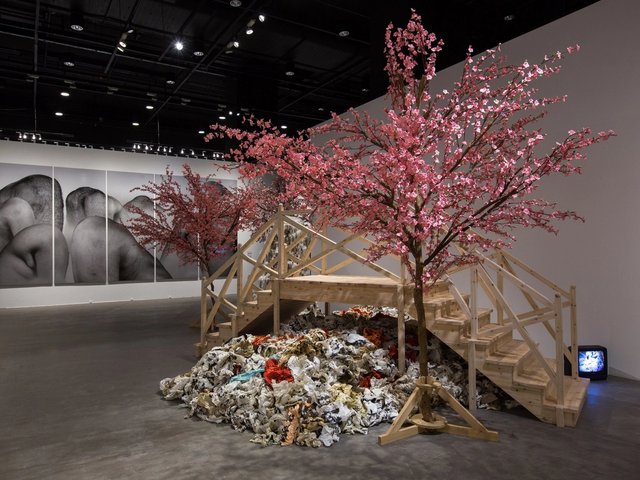Hong Kong. A new film about Uli Sigg pulls no punches about the Swiss collector’s detachment from much of the vast collection of Modern and contemporary Chinese art that he donated and sold in 2012 to Hong Kong’s M+ museum.
In a frank interview, Sigg presents himself as a Western businessman compelled to collect the history of China as he saw it happening during his travels, which began when he was working for the Swiss-based lift company Schindler. He tells the film’s director, Patricia Chen, that his collection of art from the 1970s was gathered “to mirror art production, rather than my personal taste”. Explaining his curatorial approach, he says: “Sometimes I collected a work knowing full well [that] this isn’t a great artist… if I were a private collector, I would stay away from such acquisitions, but [the collection] is a document; this particular work has its place in this document.”
Other interviewees in the film, “China’s Art Missionary”, give their assessment of Sigg’s dispassionate approach to collecting. The artist Ai Weiwei describes the collection as “very rational and comprehensive”, acknowledging that Sigg “may not favour all the artists or works”. Marc Spiegler, the director of the Art Basel franchise, says: “Most collectors only buy what they like; what Uli did from the beginning was set out to create a truly historical collection.”
“No one else was collecting the history happening in front of our eyes… [Sigg] built what a national museum should have done,” says Lars Nittve, the executive director of M+.
Chen says: “At the end of the three-day shoot, I remember telling him that at first I found his commitment to an intellectually driven mission, stripped of emotions or personal preferences, difficult to comprehend… 230 questions later, I realised that this is a long-term project that comes from a deep place. At the heart of it, Uli Sigg is a Chinese soul in Western skin.”
The short film reveals that Sigg received death threats after he showed a controversial work by the Chinese artist Xiao Yu (now with Pace Gallery, 1C07). The piece—Ruan, 1999—consists of the head of a human foetus stitched onto parts of a bird and a rabbit. Anti-abortion and animal rights groups have objected to the work. It was removed from an exhibition in Bern in 2005, and Sigg, who describes Ruan as the “most problematic” piece in his collection, says he “received mail saying ‘we will come and cut your head off’.” The work is now in the collection of M+.
Other collectors who are participating in Chen’s ongoing project about Asia’s leading art patrons include Oei Hong Djien, a collector of Indonesian art, and the Indian art-collecting couple Anupam and Lekha Poddar.
The independent film, which is an excerpt from a longer documentary that is in the pre-production and funding stage, is due to be shown for the first time—alongside the launch of the book Uli Sigg: In Conversation with Patricia Chen—on Friday 16 May in the Hong Kong Arts Centre (Agnès B Cinema, Wan Chai, 3pm; admission is free and tickets can be reserved via www.hkaconlineregistration.com) .
Originally appeared in The Art Newspaper as 'The collector with a cool head for the art of China'


